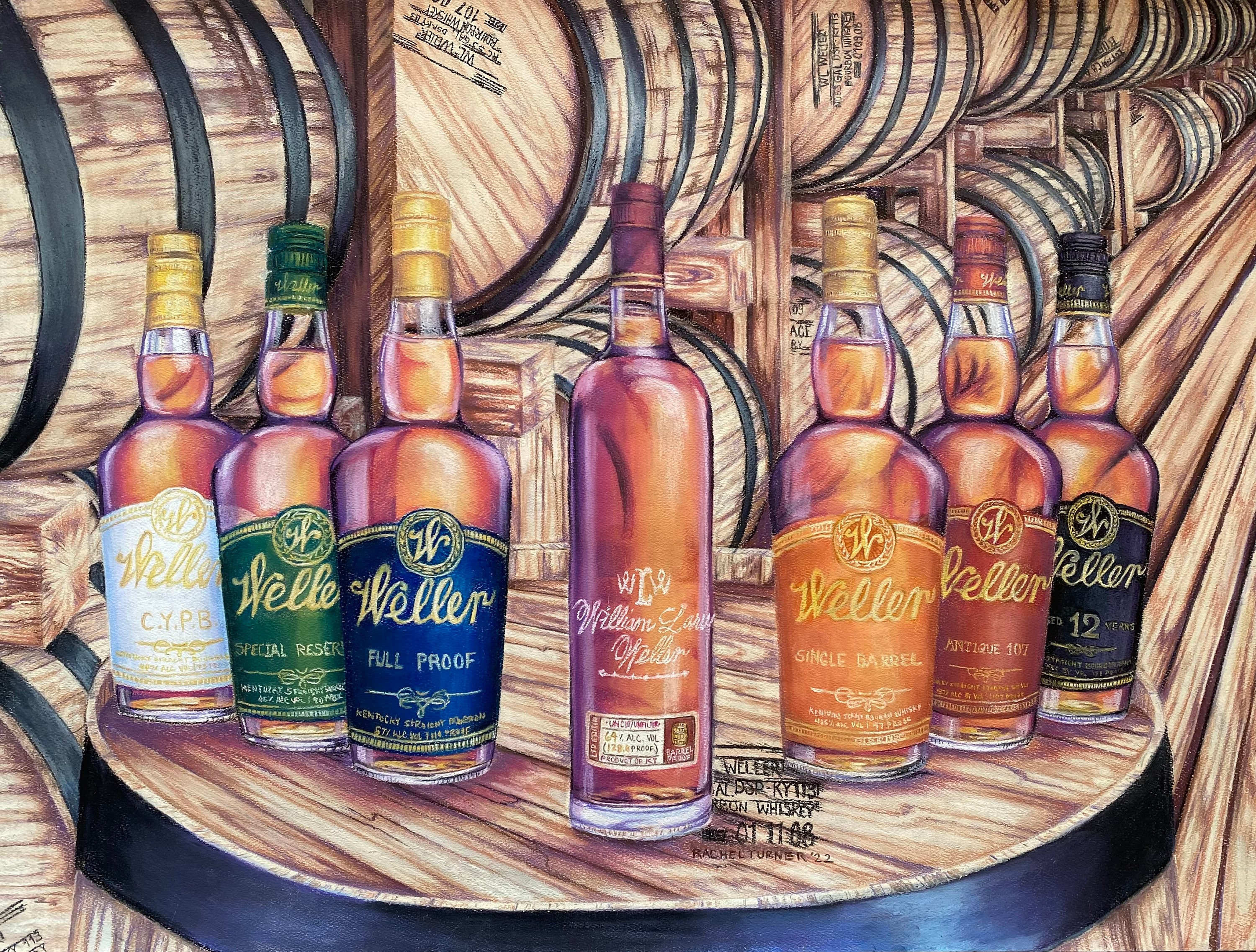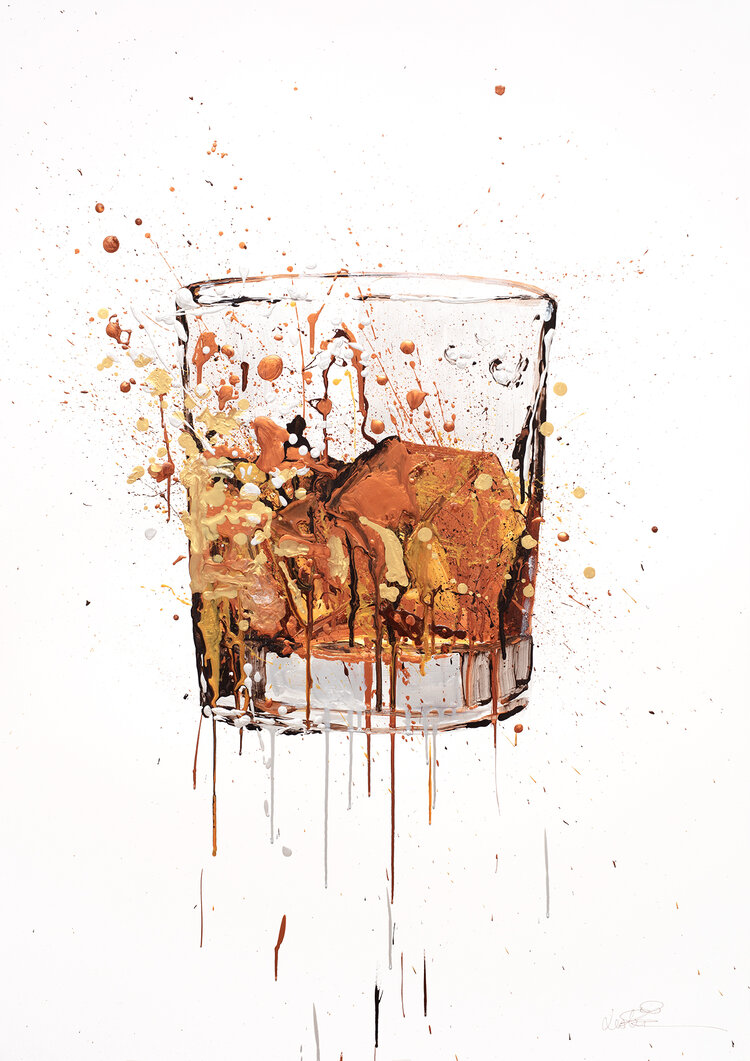Realism Art in the Whiskey Market: Portraying Moments of Distillation
Realism Art in the Whiskey Market: Portraying Moments of Distillation
Blog Article
Capturing the Essence of Whiskey Art With Special Aesthetic Representations and Styles
The art of whiskey extends beyond the liquid itself, manifesting through a range of aesthetic representations that envelop its fabled heritage and workmanship. What remains to be discovered is how these developing styles show not just the whiskey itself but additionally the changing landscape of creative interpretation. Realism Art.
The Background of Scotch Art

As scotch manufacturing spread, so as well did the wish to raise its experience through art. From the intricate engravings on very early casks to the intricate labels of modern bottles, each aspect reflects a distinct imaginative vision, serving as an aesthetic narrative of the whiskey's heritage.
In the 19th and 18th centuries, the surge of the industrial change better boosted scotch art, resulting in innovative product packaging and marketing that captured consumer interest. Artists and developers began trying out looks, imbuing whiskey-related imagery with symbolic significances that conveyed concepts of craftsmanship, community, and tradition.
Today, scotch art continues to advance, blending conventional methods with contemporary art forms. Realism Art. This recurring dialogue in between the spirit and its aesthetic depiction underscores the enduring bond between whiskey and culture, improving the total experience for enthusiasts worldwide
Iconic Bottle Designs
While lots of elements contribute to the allure of whiskey, iconic container layouts play a critical role in forming consumer assumption and enhancing the general experience. The visual presentation of bourbon containers is not merely an aesthetic factor to consider; it functions as a bridge in between the customer and the product, stimulating emotions and establishing assumptions.
Unique shapes, materials, and closures can raise a whiskey brand name's identification, making it immediately well-known on crowded shelves. For circumstances, the timeless Glenfiddich container, with its stylish tapered silhouette, shares a sense of tradition and craftsmanship, while the vibrant, contemporary design of the Balvenie bottle reflects innovation and refinement. The use of colored glass or special structures can suggest the top quality and personality of the bourbon within.
Legendary designs frequently incorporate elements of cultural heritage, symbolizing the brand's history and connection to its origins. Brand Names like Jack Daniel's utilize an uncomplicated, durable design that reverberates with its American scotch heritage. Eventually, the effect of container design prolongs past simple performance; it envelops the significance of the brand, welcoming customers to check out and indulge in the rich tapestry of whiskey culture.
Tag Art Work and Branding
Bottle designs typically establish the phase of what consumers can expect, yet tag art work and branding play a similarly substantial function in connecting a scotch's identification. The tag works as the very first factor of contact between the item and the customer, enveloping the significance of the bourbon within its visual elements.
Efficient label artwork combines typography, images, and color to produce a narrative that reverberates with the brand name's heritage and target audience. A label featuring vintage fonts and intricate images may evoke a feeling of practice and workmanship, appealing to connoisseurs. In contrast, bold colors and modern-day design aspects could attract a younger market seeking development and exhilaration.


Digital Photography and Visual Storytelling
Recording the significance of bourbon via photography and visual narration is an art form that elevates the brand experience. This tool goes beyond simple item representation, delving into the detailed narratives that border each container. By using engaging imagery, digital photographers can evoke feelings that reverberate with consumers, ultimately creating a much deeper link to the whiskey brand name.
Visual storytelling in whiskey photography typically utilizes rich structures, lighting, and composition to highlight the special features of the spirit. The interaction of light and darkness can highlight the brownish-yellow hues of bourbon, while the option of history elements-- such as rustic barrels or classy glass wares-- can reinforce the brand name's heritage or way of living associations.
Furthermore, capturing the ritualistic facets of bourbon usage, from the putting to the tasting, invites customers into a sensory experience, allowing them to think of the flavors and fragrances that wait for. Each picture not only showcases the item yet likewise narrates of workmanship, custom, and the moments that whiskey can improve - Bourbon Art. Hence, photography ends up being a powerful tool in verbalizing the identity of whiskey brands, placing them within the more comprehensive cultural landscape
Emerging Trends in Bourbon Art
The evolution of whiskey art is increasingly shaped by contemporary patterns that show broader societal changes and customer choices. This change not only highlights the significance of sustainability however likewise enhances the story Limited Edition bordering whiskey production.
Additionally, digital art has surged in appeal, enabling innovative depictions of scotch. Artists are leveraging modern technology to craft immersive experiences, such as increased truth installments that engage visitors and provide a much deeper understanding of scotch's cultural importance. This fad also encompasses social networks platforms, where visually striking content gathers focus and fosters area among lovers.
In addition, collaborations in between bourbon brand names and musicians are ending up being much more prevalent. These partnerships produce limited-edition packaging styles and exclusive art work that commemorate both the craftsmanship of scotch and the creative thinking of artists. As scotch art remains to evolve, these emerging fads will unquestionably form its future, fostering a vibrant junction of culture, sustainability, and modern technology within the bourbon area.
Verdict
Finally, the art of bourbon encompasses a diverse range of graphes that mirror its abundant heritage and craftsmanship. From renowned container layouts and intricate label artwork to compelling digital photography, each aspect adds to a more comprehensive narrative that improves the customer's experience. As arising trends, such as digital art and sustainability, continue to shape this creative landscape, the complex identification of bourbon continues to be a withstanding source of cultural link and exploration.

In final thought, the art of bourbon encompasses a diverse variety of aesthetic depictions that mirror its abundant heritage and workmanship.
Report this page